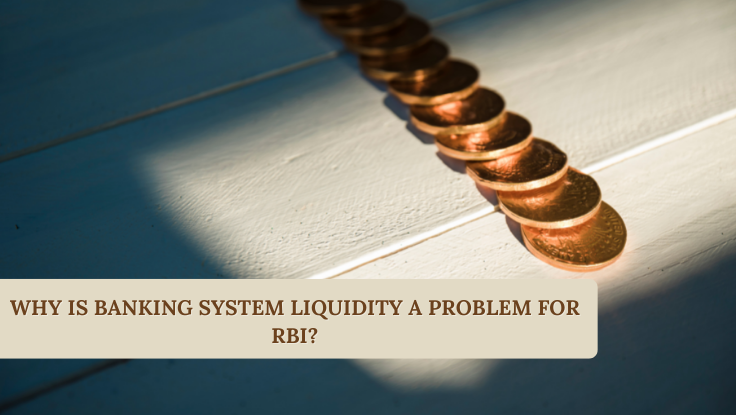Why is banking system liquidity a problem for RBI?
18 April 2022 | By Abhishek Goenka | Category - Markets
We have always maintained that this RBI regime has done a phenomenal job of maintaining financial stability during difficult times (won't be an exaggeration to call it unprecedented times) by:

- Keeping real rates low and liquidity abundant to revive growth
- Ensuring Rupee competitiveness while keeping volatility in check
- Doing its bit to support government finances/borrowing through OMOs and by transferring surpluses
This time however the RBI has its back against the wall. There is surplus liquidity in the Banking system to the extent of Rs 8.5 lakh crs. This liquidity will pin overnight rates close to the lower bound of the LAF corridor i.e. SDF rate of 3.75%. If we consider inflation at 6.5%, the real rate would be -2.75%. This would put pressure on the Rupee. Surplus liquidity is the constraining factor in RBI buying government bonds to support the government borrowing program as well.
If RBI lets Gsec yields go higher, it jeopardizes the government borrowing program. Government spending is key to sustaining growth, given the focus on CAPEX in this year's budget and given that private consumption is still not quite in full swing.
If RBI lets FX go (lets Rupee depreciate), it risks a double whammy on the inflation front i.e. a combination of higher commodities and a weak Rupee. Moreover, Rupee volatility could stoke further panic in equities, leading to outflows and in turn more pressure on the Rupee..
In our view, the RBI has to find a way of draining system liquidity quickly. That would give it levers to manage both FX (conserve Reserves) as well as rates. This can be accomplished through outright FX sales, FX Sell-Buy swaps, and issuance of CMBs (Cash Management Bills). Technically there is also the option of a CRR hike. However, that would be too hawkish.
The 3m forward is at 4.05% and the 3m US treasury bill is at 0.75% which makes the cost of withdrawing liquidity through FX swaps 4.80%. The 3m T-bill on the other hand is close to 4%. Issuance of CMBs would therefore be a cheaper way to withdraw liquidity as well (Though this cost is borne by the government, it would help the government reduce its long term borrowing cost as it would create room for the RBI to buy bonds)
Moreover, there is a limitation to doing FX Sell-Buy swaps as there are no natural receivers beyond 1y. So the kind of response subsequent swaps would receive is uncertain.
The bottom line is that as we move towards a neutral and thereafter towards a more hawkish policy, the RBI will have to find a way of sucking out liquidity effectively.





